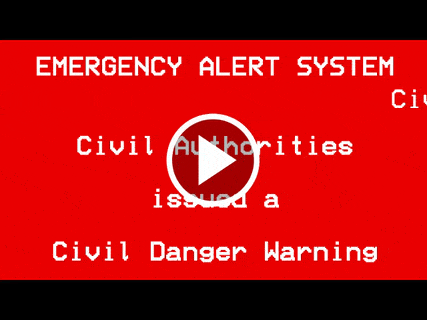Ensuring the safety and security of your home is paramount in today’s uncertain times. With crime rates on the rise, it’s crucial to implement effective self-defense mechanisms to protect yourself and your loved ones. In this article, we will explore various layers of defense that you can employ to fortify your home and enhance your overall security. From the first line of defense to survival techniques and considerations, let’s delve into creating a robust self-defense strategy.
Building a Secure Foundation The first line of defense is the foundation upon which your home’s security stands. Consider the following strategies to fortify this layer:
- Reinforce entry points: Install sturdy doors with deadbolts and reinforced strike plates. Consider upgrading to smart locks that provide additional security features such as remote access and activity monitoring. Ensure windows have secure locks and consider adding window security film or bars for added protection.
- Outdoor lighting: Illuminate your property with motion-activated lights to deter potential intruders. Well-lit surroundings reduce hiding spots and increase visibility. Consider installing lights near entrances, walkways, and the perimeter of your property.

- Landscaping considerations: Trim shrubs and trees near windows and entrances to eliminate potential hiding places. Additionally, consider using prickly or thorny plants as natural deterrents. Remove any objects such as ladders or tools that could aid an intruder in gaining access to your home.
- Neighborhood watch: Engage with your neighbors and consider joining or establishing a neighborhood watch program. Mutual cooperation and vigilance among residents can significantly improve the security of your entire community.
Strengthening the Perimeter The second layer of defense focuses on fortifying the perimeter of your home. Consider the following measures:
- Fencing: Install a sturdy fence around your property to create a physical barrier. Choose a fence that is difficult to climb, such as one with smooth surfaces or pointed tops. Ensure the gates are secured with reliable locks.
- Security cameras: Install surveillance cameras strategically around your property to monitor and record activities. Opt for cameras with high-resolution capabilities and remote access, allowing you to monitor your home even when you’re away.
- Alarm systems: Invest in a comprehensive home security system that includes sensors for doors and windows, motion detectors, and a loud alarm. Display signage indicating the presence of an alarm system to act as a deterrent.
Beyond the Basics While the first and second layers of defense are crucial, it is essential to go beyond the basics to create a multi-layered defense system. Let’s explore the third layer of defense:
- Home security systems: Invest in a reliable alarm system that includes motion sensors, door/window sensors, and surveillance cameras. Ensure proper signage to let potential intruders know that your home is protected. Consider connecting your security system to a monitoring service for added peace of mind.
- Safe room: Designate a secure area within your home, such as a reinforced room or basement, as a safe room. Install a strong door, reinforced walls, and a communication device for emergencies. Stock the safe room with essential supplies like food, water, a first aid kit, and a means of self-defense.
- Panic buttons: Consider installing panic buttons in strategic locations around your home, allowing you to alert authorities discreetly in case of an emergency. These can be connected to your security system or operate independently.

The Power of Awareness Prevention is key when it comes to self-defense. Adopting the right mindset and attitudes can significantly reduce the likelihood of becoming a target. Here are some tips:
- Be aware of your surroundings: Pay attention to your environment, especially when walking alone or in unfamiliar areas. Avoid distractions like excessive phone usage that may hinder your awareness. Trust your instincts and be cautious of suspicious individuals or activities.
- Home security habits: Develop good security habits, such as locking doors and windows when you leave home, not sharing sensitive information with strangers, and being discreet about your routines and possessions.
Equipping yourself with self-defense strategies and techniques can provide an additional layer of protection. Consider the following:
- Self-defense classes: Enroll in self-defense classes that teach practical techniques for protecting yourself in various scenarios. These classes can enhance your confidence and provide you with valuable skills. Learn techniques for striking, blocking, and escaping from potential attackers.
- Pepper spray or personal alarms: Carry non-lethal self-defense tools like pepper spray or personal alarms. These can temporarily incapacitate an attacker and give you a chance to escape. Familiarize yourself with their proper use and legality in your area.
Preparing for Emergencies For individuals who embrace the prepper lifestyle, self-defense takes on a broader perspective. Here are some considerations for preppers:
- Stockpiling essentials: Ensure you have an ample supply of food, water, medications, and other essentials in case of emergencies or extended periods of self-isolation. Rotate your supplies periodically to maintain freshness.
- Emergency communication: Establish alternative communication methods, such as two-way radios or satellite phones, to stay connected during crises when traditional communication systems may be disrupted. Familiarize yourself with emergency frequencies and protocols.
In addition to physical defense, being prepared for survival situations is crucial. Consider the following techniques and considerations:

- First aid and medical training: Acquire basic first aid and medical skills to handle injuries and emergencies until professional help is available. Learn how to administer CPR, treat wounds, and manage common medical conditions.
- Evacuation plans: Develop evacuation plans for various scenarios, such as natural disasters or civil unrest. Identify multiple evacuation routes and establish meeting points for your family. Practice these plans with your family members to ensure everyone knows what to do.
- Fire safety: Install smoke detectors on each level of your home and regularly check and replace batteries. Keep fire extinguishers in accessible locations and learn how to use them properly. Educate your family members about fire safety and establish evacuation procedures.
Creating a robust self-defense mechanism for your home involves a multi-layered approach, including reinforcing physical barriers, adopting the right mindset, learning self-defense techniques, and being prepared for emergencies.
By implementing these strategies and techniques, you can significantly enhance your home’s security, providing peace of mind for you and your loved ones in an increasingly uncertain world.
Remember, self-defense is not just about physical strength but also about awareness, preparedness, and proactive measures to deter potential threats.
Stay vigilant and prioritize the safety of yourself and your family.






